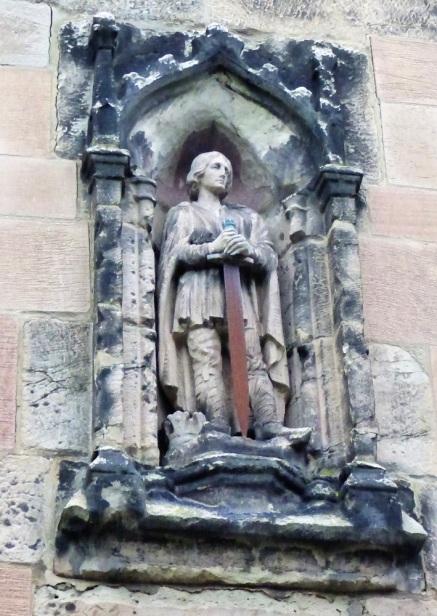
We finally made it through the outer door of St Wystan’s church in Repton…and stopped. Two huge columns flank the inner door and, scattered around the porch are fragments of ancient masonry. carved medieval grave slabs and Saxon crosses. It was a good start.
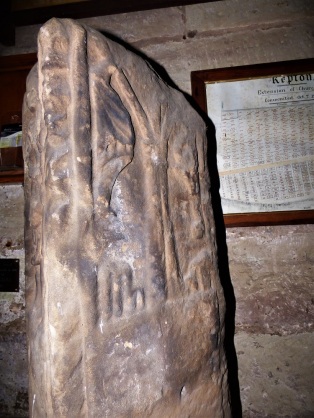
Once through the modern inner door that replaced its heavy, barred predecessor, we were on familiar territory, though every church is different and each one holds a portion of a wider history. Repton church is dedicated to St Wystan, a son of the royal Mercian line, who was murdered in 849.
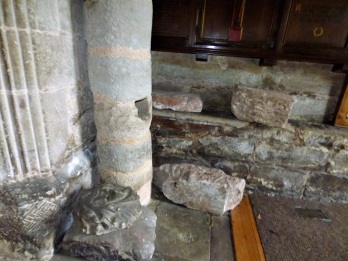
“His corpse was carried to a monastery which was famous in that age, called Repton, and buried in the tomb of his grandfather, King Wiglaf. Miracles from heaven were not wanting in testimony of his martyrdom; for a column of light shot up to heaven from the spot where the innocent saint was murdered, and remained visible to the inhabitants of that place for 30 days.” Florence of Worcester.
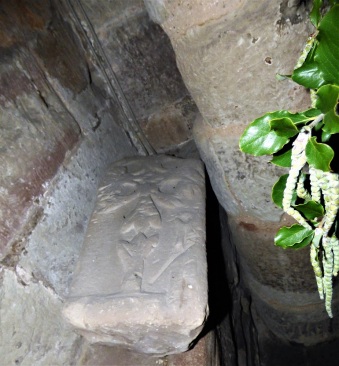
The church was first built in the 700s, although much the current fabric of the building is medieval, with 19th century restorations by Arthur Blomfield. The square tower now sports a tall and incongruous spire dating to around 1340 that is visible for miles around.

The font is one of the first things you notice. Like the Cross in the village, it is octagonal, but where the Cross is plain and simple, the font is richly carved and dates only to the nineteenth century.
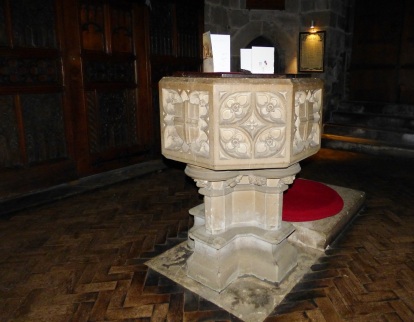
The stained glass is spectacular. Apart from one small fragment of medieval glass, the windows are Victorian and by Dudley Forsyth and James Powell & Sons. It is unusual to find so many windows by the same maker, and while aesthetically it brings the hotch-potch of history together, it does so at a cost. The character created by the mingling of many eras and makers cannot be replaced.
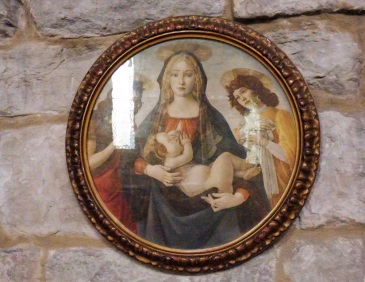
There are the usual complement of tombs and memorials in the body of the church, some of them impressive. My favourites though are somewhat simpler, although I would like to have words with Gilbert Thacker, whose memorial is an unusual, monochrome one in alabaster. The incised images show Gilbert Thacker, who died in 1563, with his wife, their two children, and a small dog. Thacker inherited the Priory Church and monastic buildings from his father, Thomas, who was Thomas Cromwell’s steward at the time of the Dissolution of the monasteries. The Priory was his ‘reward’ for his part in the destruction and his son, Gilbert, was responsible for pulling down most of the complex of buildings.
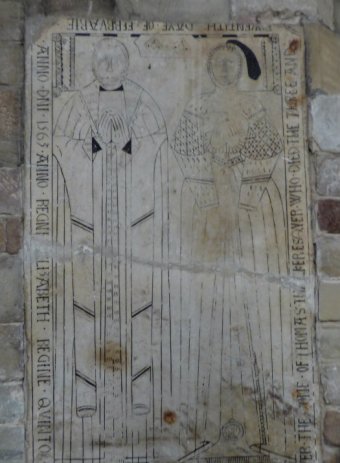
There is a rather endearing plaque to a priest and schoolmaster, who linked church and parish ‘by the sunshine of his presence’. Another, to a headmaster of the school, mentions his ‘strict, but kind administration of his trust’ and ‘the respect and affection of his scholars’. This is a blatant example of how the truth of history can be perverted, for the same master was ‘a big, bullying man, a strict disciplinarian and ferocious flogger’. When the boys heard of his illness, they went wild, broke out of school in search of ale and cake, and, at his death, smashed furniture. Not a great legacy of ‘kindness’ and ‘trust’…
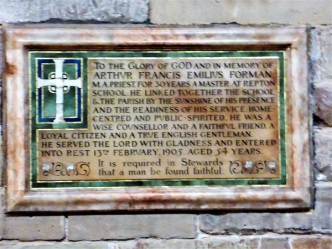
By far the most noble of the memorials, though, is to a knight. The full length effigy sleeps to one side of the chancel arch, his armour marred by the graffiti of countless generations of schoolboys. There is no name carved upon his tomb, but from his arms and insignia, he is thought to be one of the Fraunceys of Foremark, probably Thomas, who died in 1482. Nicholas Fitzherbert married Robert’s daughter and thus inherited Tissington, where his descendants still reside and which we had visited quite recently.
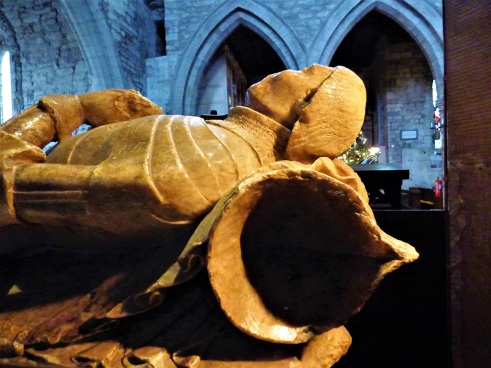
Not only does Tissington give us a bit of a connection to our patch… but we had seen the family arms at Breedon and remarked upon them. The Frauncey family name is not far removed from that of my writing partner…
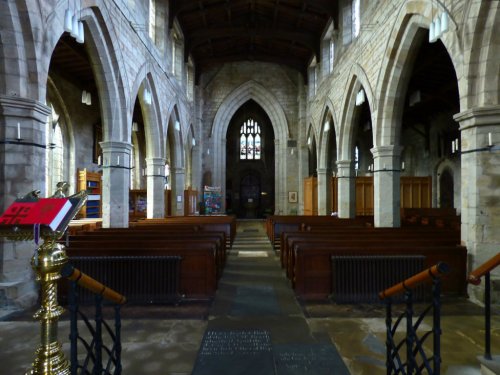
We wandered the church as we do, taking in all the details… but really, there was only one thing we wanted to see…the crypt. On my first visit, it had been locked and I was really hoping that this time, we would be lucky and could see it together…









































Oh no, Sue, you ended on a cliffhanger. I shall have to watch out for the next post so that I can see if you got to see the crypt or not. Have a lovely weekend.
LikeLike
It will be out Monday morning Robbie
LikeLike
Gorgeous, Sue. I do hope you get to see the crypt.
LikeLike
We did, Jennie ; )
LikeLiked by 2 people
Good!
LikeLiked by 1 person
Another cliffhanger! How sad the knight’s effigy has been vandalized!
LikeLike
Most of these old memorials have fallen foul of those who seek their own kind of immortality 😦
LikeLike
Unbelievable how much of these memorials are present like the time the were built. What a bulk of very useful history lessons, Sue! Thank you very much! Michael
LikeLike
Thanks, Michael… there is such a lot to see in this little church.
LikeLike